#Moving Gallery Utrecht
Text
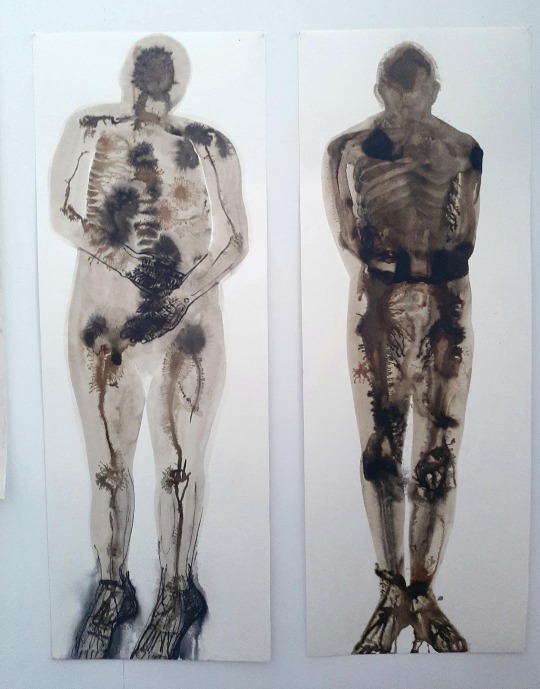
Caren van Herwaarden
Eve & Adam (2023)
watercolour & ink (140 x 50 cm)
#vulnerable #humanfiguredrawing #humanbody
#caren van herwaarden#adam and eve#eve and adam#2023#aquarel#water color#dutch art#moving gallery utrecht
710 notes
·
View notes
Text
Tajdīd (Arabic: تجديد) is the Arabic word for renewal. One who practices tajdīd is a mujaddid. A mujaddid (Arabic: مجدد), is an Islamic term for one who brings "renewal" (تجديد, tajdid) to the religion., National Gallery 10-minute talks Why is there someone drawing graffiti inside the church, Pieter Saenredam (Dutch, 1597-1665), The Interior of the Buurkerk at Utrecht, 1644, The Interior of the Grote Kerk at Haarlem, 1636-7, The National Gallery.
Tajdīd (Arabic: تجديد) is the Arabic word for renewal. One who practices tajdīd is a mujaddid. A mujaddid (Arabic: مجدد), is an Islamic term for one who brings "renewal" (تجديد, tajdid) to the religion., National Gallery 10-minute talks Why is there someone drawing graffiti inside the church, Pieter Saenredam (Dutch, 1597-1665), The Interior of the Buurkerk at Utrecht, 1644, The Interior of the Grote Kerk at Haarlem, 1636-7, The National Gallery.
https://blog.naver.com/artnouveau19/222839873187
https://en.wikipedia.org/wiki/Tajdid
https://en.wikipedia.org/wiki/Mujaddid
https://www.facebook.com/watch?v=581161040128490
https://www.nationalgallery.org.uk/paintings/pieter-saenredam-the-interior-of-the-buurkerk-at-utrecht
https://www.nationalgallery.org.uk/paintings/pieter-saenredam-the-interior-of-the-grote-kerk-at-haarlem
https://en.wikipedia.org/wiki/Taqlid
Tajdid
Tajdīd (Arabic: تجديد) is the Arabic word for renewal. In an Islamic context, tajdīd refers to the revival of Islam, in order to purify and reform society, to move it toward greater equity and justice.[1][2][3][4] One who practices tajdīd is a mujaddid.
https://en.wikipedia.org/wiki/Tajdid
Mujaddid
A mujaddid (Arabic: مجدد), is an Islamic term for one who brings "renewal" (تجديد, tajdid) to the religion.[3][4] According to the popular Muslim tradition, it refers to a person who appears at the turn of every century of the Islamic calendar to revive Islam, cleansing it of extraneous elements and restoring it to its pristine purity. In contemporary times, a mujaddid is looked upon as the greatest Muslim of a century.[5]
The concept is based on a hadith (a saying of Islamic prophet Muhammad),[6] recorded by Abu Dawood, narrated by Abu Hurairah who mentioned that Muhammad said:
Allah will raise for this community at the end of every 100 years the one who will renovate its religion for it.
— Sunan Abu Dawood, Book 37: Kitab al-Malahim [Battles], Hadith Number 4278[7]
Ikhtilaf (disagreements) exist among different hadith viewers. Scholars such as Al-Dhahabi and Ibn Hajar al-Asqalani have interpreted that the term mujaddid can also be understood as plural, thus referring to a group of people.[8][9]
Mujaddids can include prominent scholars, pious rulers and military commanders.
https://en.wikipedia.org/wiki/Mujaddid
National Gallery posted a video to playlist 10-minute talks | National Gallery.
Why is there someone drawing graffiti inside the church | National Gallery
Why is there someone drawing graffiti inside the church and what does this tell us about how artists use their imagination when painting everyday life?
Join Justine Rinnooy Kan, our Dorset Curatorial Fellow, as she looks at some behaviour we wouldn't expect to see inside a church: https://www.nationalgallery.org.uk/stories/why-is-there-graffiti-on-the-church-wall-and-what-does-this-tell-us-about-how-artists-use-their-imagination-when-painting-everyday-life?fbclid=IwAR0NZ40SOxYmpvR8B2oBDBiospA5LAbTcjOKhIEfpJQXiR1zW4S03IMd9is
https://www.facebook.com/watch?v=581161040128490
Pieter Jansz. Saenredam
Pieter Jansz. Saenredam (9 June 1597 – buried 31 May 1665) was a painter of the Dutch Golden Age, known for his distinctive paintings of whitewashed church interiors such as Interior of St Bavo's Church in Haarlem and Interior of the Sint-Odulphuskerk in Assendelft.
https://en.wikipedia.org/wiki/Pieter_Jansz._Saenredam
Pieter Saenredam
1597 - 1665
Saenredam was a pioneering Dutch painter of church interiors and topographical views. He was among the first architectural painters to emphasise topographical accuracy in his drawings, although in his paintings variations were introduced for pictorial effect. He was particularly interested in the depiction of natural light flooding vast and complex interiors.
Saenredam was born at Assendelft, the son of an engraver. His training took place at Haarlem, with Frans Pietersz de Grebber in whose studio he remained until 1622, and he became a member of the Haarlem guild of painters in 1623. He produced topographical drawings of other towns in the Netherlands, but remained chiefly active at Haarlem and ne was closely in touch with the leading architects of his day, including Jacob van Campen, designer of the Amsterdam Town Hall.
https://www.nationalgallery.org.uk/artists/pieter-saenredam
Pieter Saenredam (Dutch, 1597-1665), The Interior of the Buurkerk at Utrecht, 1644, Oil on oak, 60.1×50.1 cm, The National Gallery. Room 27
https://www.nationalgallery.org.uk/paintings/pieter-saenredam-the-interior-of-the-buurkerk-at-utrecht
Pieter Saenredam (Dutch, 1597-1665), The Interior of the Grote Kerk at Haarlem, 1636-7, Oil on oak, 59.5×81.7 cm, The National Gallery. Room 27
https://www.nationalgallery.org.uk/paintings/pieter-saenredam-the-interior-of-the-grote-kerk-at-haarlem
Taqlid
Taqlid (Arabic تَقْليد taqlīd) is an Islamic term denoting the conformity of one person to the teaching of another. The person who performs taqlid is termed muqallid.[1] The definite meaning of the term varies depending on context and age. Classical usage of the term differs between Sunni Islam and Shia Islam. Sunni Islamic usage designates the unjustified conformity of one person to the teaching of another, rather than the justified conformity of a layperson to the teaching of mujtahid (a person who is qualified for independent reasoning). Shia Islamic usage designates the general conformity of non-mujtahid to the teaching of mujtahid, and there is no negative connotation. The discrepancy corresponds to differing views on shia views on the imamate and sunni imams.
In contemporary usage, especially in the context of Islamic reformism, it is often portrayed in a negative light and translated as "blind imitation". This refers to the perceived stagnation of independent intellectual effort (ijtihad) and uncritical imitation of traditional religious interpretation by the religious establishment in general.
https://en.wikipedia.org/wiki/Taqlid
1 note
·
View note
Text
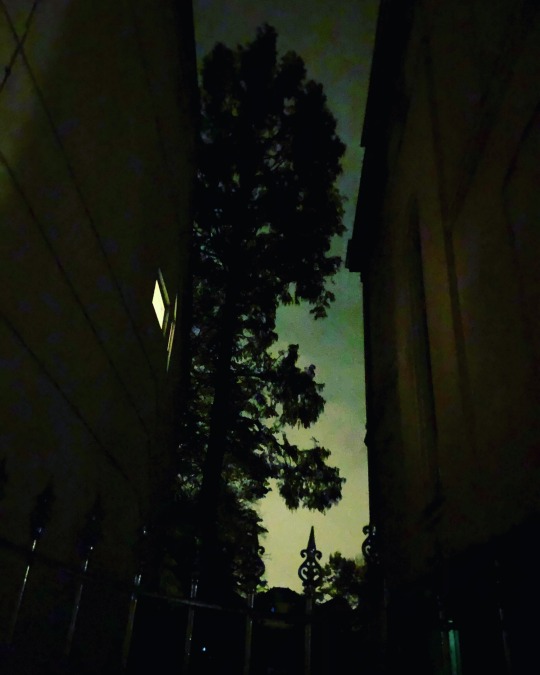
In Utrecht, novembernight (2019)
Photo Arnoud van Mosselveld
7 notes
·
View notes
Photo

TRANSMISSIONS
www.transmissions.tv
TRANSMISSIONS returns for Season 2 comprising eight episodes with contributions from BBZ TV, Juliet Jacques, Ignota Books, Lawrence Abu Hamdan, Kat Anderson, Plastique Fantastique, and many others!
All forms of community are now more important than ever, and it is vital that we find mechanisms to support each other through this precarious time. In the landscape that we have found ourselves in, many artists, writers and thinkers have had exhibitions, opportunities and subsequent fees postponed or cancelled. In response to this, we have established TRANSMISSIONS an online platform that commissions artists to share their work within a classic DIY TV show format.
Episode 1 | 9 September | 9PM GMT
REPLAY | 11 September | 9AM GMT
Kat Anderson: Bad Man Nuh Flee
Episode 2 | 16 September | 9PM GMT
REPLAY | 18 September | 9AM GMT
Plastique Fantastique Communiqué: Beware Mars with Earth in Ascendance
W/ Plastique Fantastique / Arianne Churchman & Benedict Drew / Christopher Kirubi /
Gentle Stranger
Episode 3 | 23 September | 9PM GMT
REPLAY | 25 September | 9AM GMT
Juliet Jacques: Spectres of Socialism
W/ Bill Morrison / Colin Newman / Deimantas Narkevičius / The Duvet Brothers /
Erica Scourti / Igor & Gleb Aleinikov / Jasmina Cibic / John Smith / Kerry Tribe /
Octavio Cortázar / Oleksiy Radynski / R W Paul / Santiago Álvarez
Episode 4 | 30 September | 9PM GMT
REPLAY | 2 October May | 9AM GMT
Lawrence Abu Hamdan
W/ Maryam Jafri / Maan Abu Taleb & Others
Episode 5 | 7 October | 9PM GMT
REPLAY | 9 October | 9AM GMT
BBZ TV: Past, Present and Future
Episode 6 | 14 October | 9PM GMT
REPLAY | 16 October | 9AM GMT
Ignota Books: Deep Deep Dream
Episode 7 | 21 October | 9PM GMT
REPLAY | 23 October | 9AM GMT
Curated by Anne Duffau, Hana Noorali and Tai Shani
W/ Adam Christensen / Carolyn Lazard / Hardeep Pandhal / Imran Perretta /
Jordan Lord / Sung Tieu / Tabita Rezaire / Lloyd Corporation / Rehana Zaman & Others
Episode 8 | 28 October | 9PM GMT
REPLAY | 30 October | 9AM GMT
w/ TBC
Season 2 of TRANSMISSIONS will run as eight weekly episodes screening every Wednesday at 9 pm BST and repeated on Friday at 9 am BST on Twitch. The 1st episode will air on 9th of September 2020. Each artist included in TRANSMISSIONS is paid a fee in return for their contribution. In some instances, artists have waived their fees in order to donate the money to a charity of their choice. With a sense of community, all the money used to pay artists in season 2 has been kindly donated by established art institutions and commercially stable artists.
Season 2 is funded and supported by BALTIC Centre for Contemporary Art, Chisenhale Gallery, DACS, Grazer Kunstverein, Matt's Gallery, Studio Oscar Murillo, Netwerk Aalst, Somerset House Studios and Wysing Arts Centre.
Episode 1 | 9 September | 9PM GMT
REPLAY | 11 September | 9AM GMT
Kat Anderson: Bad Man Nuh Flee
Kat Anderson will show a collection of audio/visual notes on oppression, Black liberation and the white imagination.
Kat Anderson is a visual artist and filmmaker, working under an artistic and research framework called ‘Episodes of Horror’, which uses the genre of horror to discuss representations of mental illness and trauma as experienced by or projected upon Black bodies in media.
Episode 2 | 16 September | 9PM GMT
REPLAY | 18 September | 9AM GMT
Plastique Fantastique Communiqué:
Beware Mars with Earth in Ascendance
W/ Plastique Fantastique / Arianne Churchman &
Benedict Drew / Christopher Kirubi / Gentle Stranger
On 30 May 2020, at 3:52 pm EDT, Plastique Fantastique watched the Spacex Falcon 9 rocket carry NASA personal (for a fee) to the International Space Station and thought, as below, so above (next stop the moon, then Mars)… there is much today, down here, that needs our urgent attention… and there is much in the future, up there, to worry about too (including one million people living on Mars by 2050 as the first stage of planetary colonisation)… Earth views Mars as a planetary symbol for the cocksure warrior, and for violence, passion, assertion, and the weaponization of skill and sex… above all, Mars is the sign of competition (and Mars is a goal for commerce)… Mars is not this Mars though... That land is not that land… We know a different Mars (we have been there)… It is the hominids of Earth that have projected this image (of themselves) onto Mars… all other animals know this… Mars as ruling planet is not to be feared… it is Earth as ruling planet (Earth in Mars and the Mars in Earth) that we need to worry about…
For episode two of the second series of Transmission2020, Plastique Fantastique offer moving images, stories and songs about planetary problems, below and above, with help from our friends Gentle Stranger, Christopher Kirubi and the collaboration of Arianne Churchman & Benedict Drew. The broadcast will feature clips from a film by Plastique Fantastique commissioned by Southwark Park Galleries.
Plastique Fantastique is a collaboration between David Burrows, Simon O’Sullivan, Alex Marzeta and Vanessa Page and others, including Mark Jackson, Motsonian, Benedict Drew, Frankie Roberts, Harriet Skully, Ana Benlloch, Stuart Tait, Tom Clark, Simon Davenport, Joe Murray, Lawrence Leaman, Samudradaka and Aryapala. The collaboration is a performance fiction produced through comics, performances, text, music, film and assemblages, and investigates the relation of aesthetics and politics and sacred, popular and mass cultures. Recent exhibitions include Shonky: Aesthetics of Awkwardness, Hayward Touring Show 2017-18, and Mars Year Zero at Southwark Park Galleries 2019.
Episode 3 | 23 September | 9PM GMT
REPLAY | 25 September | 9AM GMT
Juliet Jacques: Spectres of Socialism
W/ Bill Morrison / Colin Newman / Deimantas Narkevičius /
The Duvet Brothers / Erica Scourti / Igor & Gleb Aleinikov /
Jasmina Cibic / John Smith / Kerry Tribe /
Octavio Cortázar / Oleksiy Radynski / R W Paul /
Santiago Álvarez
Less than a year after the UK's traumatic General Election, after a pandemic that would surely have been far better handled if the principles of communality and solidarity had been at the heart of government, Juliet Jacques presents a selection of films that mostly look back at socialist politics and culture. Starting with comrade John Smith's film made in response to the Covid-19 crisis, and the government's chaotic communications, these films - by Jasmina Cibic, Octavia Cortázar, the Duvet Brothers, Deimantas Narkevičius, Oleksiy Radynski, Kerry Tribe and others - engage creatively with ideology and art in Yugoslavia, the USSR, Cuba, the UK and beyond.
Juliet Jacques (b. 1981) is a writer and filmmaker, based in London. She has published two books, most recently Trans: A Memoir (Verso, 2015). Her short fiction, journalism and essays have appeared in numerous publications including The Guardian, Granta, Frieze, Sight & Sound, Wire, New York Times, 3:AM, The New Inquiry, Arts of the Working Class, London Review of Books and elsewhere. Her short films have screened in galleries and festivals worldwide. She has taught art and creative writing at the Royal College of Art and other institutions, and hosts the political arts podcast Suite (212).
Episode 4 | 30 September | 9PM GMT
REPLAY | 2 October May | 9AM GMT
Lawrence Abu Hamdan
W/ Maryam Jafri / Maan Abu Taleb & Others
Lawrence Abu Hamdan is a “Private Ear”. His interest with sound and its intersection with politics originate from his background as a touring musician and facilitator of DIY music. The artists audio investigations has been used as evidence at the UK Asylum and Immigration Tribunal and as advocacy for organisations such as Amnesty International and Defence for Children International together with fellow researchers from Forensic Architecture.
Abu Hamdan completed his PhD in 2017 from Goldmsiths College University of London and is currently a fellow at the Gray Centre for Arts and Inquiry at the University of Chicago
Abu Hamdan has exhibited his work at the 58th Venice Biennale, the 11th Gwanju Biennale, the 22nd Sydney Biennial and the 13th and 14th Sharjah Biennial, Witte De With, Rotterdam, Tate Modern Tanks, Chisenhale Gallery, Hammer Museum L.A, Portikus Frankfurt, The Showroom, London and Casco, Utrecht. His works are part of collections at MoMA, Guggenheim, Van AbbeMuseum, Centre Pompidou and Tate Modern. Abu Hamdan’s work has been awarded the 2019 Edvard Munch Art Award, the 2016 Nam June Paik Award for new media and in 2017 his film Rubber Coated Steel won the Tiger short film award at the Rotterdam International Film festival. For the 2019 Turner Prize Abu Hamdan, together with nominated artists Helen Cammock, Oscar Murillo and Tai Shani, formed a temporary collective in order to be jointly granted the award.
Episode 5 | 7 October | 9PM GMT
REPLAY | 9 October | 9AM GMT
BBZ TV: Past, Present and Future
BBZ present a snapshot into queer Black British archives, memes that shaped us and a re- imagined queertopia.
BBZ is a Black Queer Art & DJ collective raised in London with roots in nightlife and clubbing culture, working to challenge institutionalised and post colonial behaviours. We prioritise the experiences of Black queer womxn, femmes, trans folk and non binary people in all aspects of our work, providing physical and online spaces for this specific community.
Episode 6 | 14 October | 9PM GMT
REPLAY | 16 October | 9AM GMT
Ignota Books: Deep Deep Dream
Deep Deep Dream is a journey through the techniques of awakening taking the hallucinogenic form of a palindrome. Unfolding through a series of experimental rituals, this encounter is an invitation to touch the dreamworld — a place where no matter how far you walk, you arrive back at your point of departure — and a meditation on these questions: What kind of world do you want to live in? What is a world?
Ignota Books is an invitation to awaken, and at the same time, dream. Founded in the last days of 2017 in the Peruvian mountains by Sarah Shin and Ben Vickers, Ignota publishes at the intersection of technology, myth-making and magic. Deriving our name from Hildegard of Bingen’s mystical Lingua Ignota, we seek to develop a language that makes possible the reimagining and reenchantment of the world around us.
Episode 7 | 21 October | 9PM GMT
REPLAY | 23 October | 9AM GMT
Curated by Anne Duffau, Hana Noorali and Tai Shani
W/ Adam Christensen / Carolyn Lazard / Hardeep Pandhal /
Imran Perretta / Jordan Lord / Sung Tieu / Tabita Rezaire / Lloyd Corporation / Rehana Zaman & Others
Episode 8
| 28 October | 9PM GMTREPLAY | 30 October | 9AM GMT
w/ TBC
Thank you to:
All contributing artists, writers, composers and thinkers; Adam Sinclair; Donald Smith; Hen Page; Lori E. Allen; Maxwell Sterling; Mika Lapid;
BALTIC Centre for Contemporary Art
Chisenhale Gallery
DACS
Grazer Kunstverein
Matt's Gallery
Studio Oscar Murillo
Netwerk Aalst
Somerset House Studios
Wysing Arts Centre
www.transmissions.tv
@transmissions2020
TRANSMISSIONS collective is composed of:
Anne Duffau
is a cultural producer, researcher, and founder of A---Z, an exploratory/nomadic curatorial platform exploring artistic practices and knowledge exchange through collaborations, presentations, soundscapes, screenings and discussions. She has collaborated with a range of projects and organisations including ArtLicks, Southwark Park Galleries, Mimosa House and Danielle Arnaud Gallery, London Please Stand By, or-bits .com, PAF Olomouc Czech Republic & Tenderflix. Anne has previously run the StudioRCA Riverlight, London programme (2016-2018) and is currently the interim curator at Wysing Arts Center, a Tutor at the School of Arts and Humanities, and is the acting Lead in Critical Practice, within the Royal College of Art’s Contemporary Art Practice Programme. She has performed live music under Alpha through a number of projects and collaborations.
Hana Noorali
is an independent curator and writer based in London. In 2019 she was selected (together with Lynton Talbot) to realise an exhibition at The David Roberts Foundation as part of their annual curator’s series. She curated Lisson Presents at Lisson Gallery, London from 2017-2018 and from 2017 -2019, produced and presented the podcast series Lisson ON AIR. In 2018 Hana edited a monograph on the work of artist and Benedictine Monk, Dom Sylvester Houédard. Its release coincided with an exhibition of his work at Lisson Gallery, New York that she co-curated with Matt O’Dell. In 2007, she co-founded a non-profit project space and curatorial collective called RUN active until 2011. In 2020 Hana and her curatorial partner Lynton Talbot will be publishing an anthology that examines the intersection of poetry and film with (p) (prototype).
Tai Shani
is an artist living and working in London. She is the joint 2019 Turner Prize winner together with Lawrence Abu Hamdan, Helen Cammock and Oscar Murillo. In 2019 Tai was a Max Mara prize nominee. Her work has been shown at Turner Contemporary, UK (2019); Grazer Kunst Verein, Austria (2019); Fondazione Sandretto Re Rebaudengo, Italy (2019); Glasgow International, UK (2018); Wysing Arts Centre, UK (2017); Serpentine Galleries, London (2016); Tate, London (2016); Yvonne Lambert Gallery, Berlin (2016) and Irish Museum of Modern Art, Dublin (2016).
4 notes
·
View notes
Photo
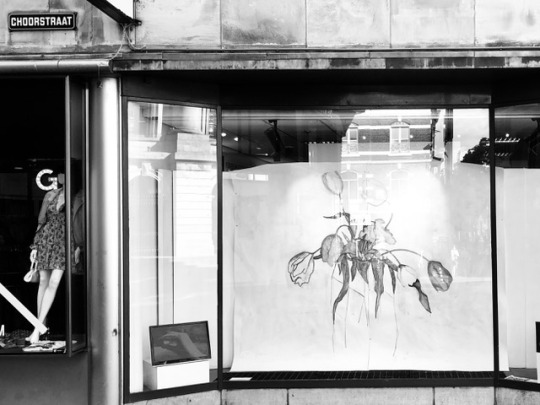
Utrecht, Broese. Arnoud van Mosselveld (NL, 1961), Big Tulips (2020).
© Moving Gallery
4 notes
·
View notes
Photo




Vernissage of Max Kisman’s (well-known Dutch designer and artist) 26m long mural, by colleague Joost Swarte and gallery owner Arnoud van Mosselveld in De Moving Gallery in Utrecht.
16 notes
·
View notes
Text
the closest to heaven that i'll ever be (Kanej Guardian Angel AU)
From @elorcaning‘s prompt of Kaz just being an idiotic human getting in trouble all the time and inej is his guardian angel just trying to keep him from dying while doing stupid shit, which I thought was a BRILLIANT idea and kinda ran with. At 1 AM while on jetlag so I Apologise.
Props to @kettvrdams for not killing me when i sent an incomprehensible WIP for her to beta. All accidentally unfinished sentences and spelling errors are entirely My Own Fault
On AO3 - 1816 words, Teen
In her illustrious career as a guardian angel, Inej has learned several things. The first is to believe in the fundamental good of all people- well, almost all people. Almost. But really, she likes to think the best.
The second thing is that no matter how hard she tries- and damn, she really tries hard- humans will still find ways to screw their own lives over, and even if her role is supposed to be more hypothetical or spiritual than anything, she always finds herself getting involved in more practical ways.
But still she thinks, as the poor Dutch farm kid tries to eat fertiliser from the container for the third time, only to be shooed away by his older brother, that this is going to be a challenge.
--o0o--
“Organised crime? Really?” sneers a figure in the corner of the precinct station with their dark hood pulled down low. Kaz glances around. There isn’t anyone else around aside from the beat cop who’s just let him out of the holding shell with a glare and a kick to his good shin.
The figure pulls their hood down. It’s a girl about his own age. Looks like a university student, with a purple jacket and a rain slicker.
She holds out a plastic Albert Hejn bag. Ah. So this is what it’s about. Per Haskell, Pekka Rollins, whoever the fuck it is this time, want him to move something. Cash, drugs, fucking tulip bulbs for all he knows. He doesn’t really care, as long as he’s alive on the other side of it.
But it isn’t really heavy enough to be either of those things.
“You haven’t eaten anything in over twenty four hours.”
He doesn’t know how she could possibly know that, but when he looks inside, what he finds is a cheese sandwich and a bottle of orange juice. Sealed, so it would have been goddamn hard to hide a USB or whatever it is Pekka wants out of the country inside.
“Who sent you? Pekka? Ferry Bouman? Sonny Castillo?”
“Are those the only things your mind goes to?” Now the girl just sounds annoyed.
“I’m not in the habit of beautiful girls meeting me in police precincts without having some other angle they’re working. So what is it? Who do you work for?”
Beautiful girl. He didn’t mean to say that. He’s a lot of things, but a flirt isn’t one of them. Yet even in the yellowy light of the precinct, he can tell that's what she is, with her heart-shaped face and the fan of her oil-dark hair.
“Eat your damn sandwich” she says, and is gone before he can say anything else.
--o0o--
“Don’t get too involved,” says Zoya.
“The job description is guardian angel, ergo, I guard.”
--o0o--
Organised crime. Really. Perhaps not in the highest echelons, and it’s fucking Amerstedam, but still, organised crime.
Sometimes she really doesn’t think he’s organised enough to get mixed up in organised crime.
--o0o--
“Genuine Givenchy. Also got Rolex watches, Hugo Boss shirts-” he offers the middle-class housewives out on a girl’s trip to Amsterdam. The back of the florist’s he’s operating out of is packed with genuinely decent-looking fakes. It’s also on Sonny Castillo’s territory.
“Best space brownies in Amsterdam,” he promises a group of tipsy Erasmus students from Manchester with a smile that’s the image of sincerity. The coffee shop is on Ferry Bouman’s territory.
“Now this is a real Vermeer,” he tells the new-money-oil-don looking for a bit of old-school, Cultured, flash for his new penthouses in Dubai and London. The art gallery is on Pekka Rollins’ territory.
--o0o--
“He’s going to get himself killed,” Inej tells her boss.
--o0o--
“You think I can’t smell a rat, Brekker? You don’t fucking think I can’t tell when some bastard ratfuck tries to fuck me over?”
There have been many points during which Kaz thought his ass to be well and truly cooked. Almost drowning in the harbour in Rotterdam when he was twelve was certainly one of them, but it was also far from the last.
But now he’s got a gun to his temple and there’s no more talking he can do, not one more trick more trick up his sleeve or one more secret he can leverage into five more minutes, ten more minutes, another day to make things right.
There’s just him and a dark alley at the edge of the city and the freezing rain, pelting down and soaking him to the bone. And the angry hands slamming his face into the alley wall, over and over again, until blood runs down his face and chest and the rainwater tastes salty.
“Please. A week. No, a day, I’ll make it up-”
“Like last time you promise me, huh? Promise me twenty thousand? And then I find out you shelling out ten thousand Euros to Ferry Bouman to keep selling on Pekka Rollin’s turf. He ain’t gonna forget this, boy-”
“Ten thousand. I can get you ten thousand, you know I can-”
He sees the flash of a gun being raised, can almost feel the air change as the man pulls back the trigger, and then-
Like a flash of lightning, the moment after the fireworks go off. Light everywhere, the snap of sound of thunder, condensed, and then-
In the moment after the light, Kaz can’t see a thing. And then he can: the three grunts Pekka sent after him, lying in an alley, and the remains of several guns, incinerated to crisps. And the flash of something, a person maybe, going around the corner.
“THE FUCK ARE YOU?” He screams into the pouring rain, but no response comes back.
--o0o--
Sometimes, Inej wants to scream at him so loud he can hear it.
“And what were you expecting, exactly? Why can’t you just. . . .” she thinks of the words she hears people using, these days, “stay in your darn lane? You waste your mathematics scores dealing. You waste your German scores on conning tourists. You just . .. you waste your life.”
He’s had the pinched face of a businessman, and an older man, since his parents died. Since his brother died, and he spent his youth pinballing between foster homes and getting increasingly involved in things that the Korps Nationale Politie tend to take a rather dim view of. In all that time, though, she’s rarely seen fear on his face like this. She almost wants to reach out, across the train, tuck the edges of his carefully slicked-back hair back behind his ear, but she doesn’t.
“Why couldn’t you have just . . . stuck to selling overpriced marijuana to tourists or designer knockoffs from behind a tulip stand? Forging Vermeers? Stealing actual Vermeers?”
--o0o--
It’s only when he gets off at Utrecht Centraal that he notices an unfamiliar weight to his jacket pocket.
A neatly folded wad of cash. He flips through it gingerly. Twelve thousand euros.
--o0o--
“You can’t save his ass every time. Otherwise, he’ll never learn, and he’ll go beyond the point where you can save him.”
“But if I don’t save his ass now, he’ll die before he can learn.”
“Ah. That’s the eternal conundrum, isn’t it? Of the teacher and of the guardian angel.”
--o0o--
It’s not a particularly big country, but every time the train ride seems to last all day, and stretch into the night. Inej, at least, doesn’t need to buy a ticket. He buys flowers at Amsterdam Centraal. Changes trains at Maastricht and then again to a rural line, until he gets off at a station that’s nothing more than a strip of concrete alongside the track in a rain-soaked wheat field. There’s no taxis, no buses, only a long road through the countryside and the remainders of a life he’s tried to forget about at the end of it. He unfolds his walking cane and gets a move on.
On a hill, on a farm where the apple orchards have gone to seed and the roof of the house fallen in:
Annemarie and Jawad Rietveld. And a scratched out stone for Jordaan Rietveld.
He leaves the flowers, not particularly giving a fuck about the fact that he could be shot, right here and now, by Pekka Rollins, because this is Pekka Rollins’ land, even if it was Jawad Rietveld’s land first, and then Albert Rietveld’s land before that, even if, on a day so far removed from Kaz’s present life that it feels like someone else’s life entirely, Kaz thought that it would be Jordaan Rietveld’s land in the future.
He feels, in a way, her presence before he can see her.
“I know you’re there.”
She sighs and makes herself visible.
“It’s you. The girl on the train.”
“I don’t think so-” she says, taking on a heavy Flemish accent just in case he remembers her from the police precinct in Groningen. “I’m from Ant-”
“You. Your face.” I could never forget you face, he thinks. The police precinct, and then the train to Utrecht Centraal. A rare sunny day in this pit of gloom and rain, and the way that the sunlight hit her lashes, the curve of her cheeks, the splash of her dark hair, made him think that it was impossible there wasn’t something divine and benevolent in this life, and this world. “Police precinct up North. Gronigen. Train. Amsterdam. Everywhere i go you’re always-” He thinks about pulling the shiv from his pocket. Anyone so interested in following him certainly has ulterior motives, and yet-
“What are you? Why are you always- there?”
“I don’t think, Mr. Brekker, that your . . . theological opinions would permit you to believe me when I tell you what, exactly, I am.”
He shrugs. “Grandson of lapsed NHK’ers and Javanese Sunnis. No god helped them a whit. I don’t think God, if they ever existed, ever looked at this drowning spit of dirt.”
“I think there are many who wouldn’t disagree with you. Some of them, like myself, being of a divine persuasion.”
“Why are you here?”
She doesn’t answer, just turns towards the graves. A light rain has started to fall.
“Do you think you’re following the path they’d be proud of?”
--o0o--
“You know I count as a fucking mature student? Mature.”
Even she has to laugh.
“I’m fucking twenty three. Twenty three. I got carded trying to buy a beer yesterday.”
“But now a student.”
He flashes his new, shiny plastic student card at her. The photo on it still looks like a mugshot.
“What are you studying?”
“Politics. International Relations. How different can the European Council be from the mob, really? Common Agricultural Policy, pay off Europol, work some backroom deals to get shit done.”
Inej resists the urge to burrow her forehead in her jacket sleeves. There are, it turns out, many, many ways for a human to get themselves killed, on this world.
48 notes
·
View notes
Text
MACHINE HEAD have shared another brand new song, ‘Circle the Drain.’

Listen here - https://www.youtube.com/watch?v=To_4s0WE8vo and pick up your download here https://nuclearblast.com/mh-circlethedrain.
In March 2018, MACHINE HEAD frontman/guitarist and visionary, Robb Flynn began having ideas for a new song. Over the following 6 months, a crazy series of events would lead to what would become this new track, but not without unsuspecting detours and downright sad events as the band in its ‘then current’ form, fell apart. These two video diary clips document the ‘making of…’ ‘Circle The Drain’.
Part 1 - https://youtu.be/Cz2clO10Lcs
Part 2 - https://youtu.be/EIYTQAEEH90
Guitarist / vocalist Robb Flynn describes the song as the anti-Valentine's Day song. "The song is inspired by an acquaintance of mine who returned from Afghanistan only to have his relationship fall apart with his girl. She had messed around on him, then got paranoid about him messing around on her, and drove him crazy. We had a conversation on Valentine's Day and he said to me "they were just circling the drain”… the phrase struck me. A few days later I incorporated it into the song I’d been working on. It was a strange parallel with my life at the time, having recently had two band members quit, and even more bizarrely, two long-time couple friends of my wife and I, also divorce. It was break-up season, and it played out with friends taking sides, people not being invited to certain events anymore, social and emotional pressure, and all the typical stuff that happens when a relationship goes bad. Watching this guy pull through it, helped me pull through my own upheaval. The lyrics to 'Circle The Drain' came out of that frustrating time. It's a sad song about relationships gone bad, but accepting that it's over, and making yourself move on. I wrote it in a more metaphorical tone, as I didn’t want it to be about my life, but to be about anybody’s life who may be going through a rough time like that. It may not be a song that connects with everyone, especially those in a solid relationship, but if the day ever comes when your life goes awry, this song will be a lifeline for you, something to help pull you up out of that dark place. The irony that he and I had the original conversation on Valentine's Day, and are now releasing it on Valentine's Day isn’t lost on me, it really is the anti-Valentine's Day song.”
The song was once again produced by Robb Flynn (Machine Head’s Through The Ashes Of Empires, The Blackening, Bloodstone & Diamonds), and co-produced by Zach Ohren (All Shall Perish, Suicide Silence, Machine Head) at Sharkbite Studios in Oakland. Joel Wanasek (Attilla, Bloodline) once again handled post-production duties, while Russ Russell (At The Gates, The Wildhearts, Dimmu Borgir) over at Parlour Studios UK handled the beefy, guitar-heavy song mix. Finally the track was mastered by the same gentleman who mastered “Through The Ashes Of Empires” Greg Grimaldi at Oasis Mastering. “Circle The Drain" features the drumming of Navene Koperweis (Entheos, Whitechapel, Animals As Leaders, Animosity).
In late 2019, the band also dropped a video for the new song ‘Do Or Die’ through Imperium Recordings x Nuclear Blast. Watch and listen to that track here.
MACHINE HEAD are currently on the last few dates of the US leg of their "An Evening With" Winter 2020 tour. With increased demand for tickets, the band make a return to the UK and Europe for a second string of shows this Spring. The current tour features three hours of music spread over two sets, while celebrating the 25th Anniversary of Burn My Eyes. Part One features a battery of fan favourites from the band's vast catalogue, including "Imperium," "Halo," "Ten Ton Hammer," and "The Blood, The Sweat, The Tears." This set features frontman/guitarist Robb Flynn and bassist Jared MacEachern, performing alongside new members, Vogg Kiełtyka and Matt Alston on guitar and drums, respectively. Part Two of the show features the band's classic debut album Burn My Eyes played in its entirety for the first time ever on tour. Taking the stage for this part of the set are original members and Burn My Eyes-era alumni, drummer Chris Kontos and guitarist, Logan Mader.
Tickets for the upcoming UK and EU dates are available now from https://www.livenation.co.uk/artist/machine-head-tickets. A very limited amount of VIP packages per show are also available. Click to http://machinehead.vip for details.
MACHINE HEAD ON TOUR:
APRIL 2020
Sun 19th - Spain, ZARAGOZA, Teatro de las Esquinas
Tue 21st - Spain, SANTIAGO DE COMPOSTELA, Capitol
Thu 23rd - Portugal, OPORTO, Coliseu de Porto
Fri 24th - Portugal, LISBON, Coliseu de Lisboa
Sat 25th - Spain, MADRID, La Riviera
Mon 27th - Spain, MALAGA, Paris 15
Tue 28th - Spain, MURCIA, Gamma
Wed 29th - Spain, VALENCIA, Republicca
MAY
Fri 1st - Spain, BARCELONA, Razzmatazz
Sat 2nd - France, TOULOUSE, Le Bikini
Tue 5th - Germany, LUDWIGSBURG, MHP Arena
Wed 6th - Germany, WIESBADEN, Schlachthof
Fri 8th - Germany, HANNOVER, Swiss Life Hall
Sat 9th - Czech Republic, PRAGUE, Forum Karlin
Sun 10th - Slovakia, BRATISLAVA, Refinery Gallery
Tue 12th - Romania, BUCHAREST, Quantic Club
Wed 13th - Bulgaria, SOFIA, Universiada Hall
Fri 15th - Greece, THESSALONIKI, Fix Factory Of Sound
Sat 16th - Greece, ATHENS, Piraeus Academy
Wed 20th - Ukraine, KIEV, Stereoplaza
Fri 22nd - Russia, MOSCOW, Club 1930
Sat 23rd - Russia, ST PETERSBURG, A2 Green
Mon 25th - Finland, HELSINKI, The Circus
Thu 28th - Sweden, STOCKHOLM, Fryshuset Arenan
Fri 29th - Norway, OSLO, Sentrum Scene
Sat 30th - Denmark, AARHUS, Train
JUNE
Mon 1st - Germany, HAMBURG, Grosse Freiheit 36
Tue 2nd - Netherlands, UTRECHT, Tivoli Vredenburg
Wed 3rd - France, LILLE, L’Aeronef
Fri 5th - UK, LONDON, Alexandra Palace
Sat 6th - UK, BIRMINGHAM O2 Academy
For more info on MACHINE HEAD, contact [email protected] or point your mouse at www.machinehead1.com
3 notes
·
View notes
Photo

Christ before the High Priest | Gerard van Honthorst | 1617 | London National Gallery
“Christ was brought before the High Priest by Roman soldiers. He was questioned about his teachings and false testimony was called against him.” (Matthew 26: 57-66).
This is one of the most famous and most celebrated paintings made by Honthorst in Rome, and shows the powerful influence of Caravaggio.
The intense atmosphere of the scene is focused on the burning candle in the centre of the composition and heightened by the ingenious use of a visible light source, and beside it the arm and raised finger of the High Priest. Under Jewish law his claim to be the Messiah was punishable by death, and the book on the table in front of the High Priest contains the proscriptions of the Mosaic Law.
The painting is concentrated in theme, lacking the anecdotal character that affected the work of the majority of Caravaggio's followers. In this respect, it approaches the directness of Caravaggio's own later work, such as "Salome receives the Head of Saint John" (also in the London National Gallery's Collection).
According to van Honthorst's biographer, Joachim von Sandrart, the patron was the Marchese Vincenzo Giustiniani, in whose palace the artist stayed during his years in Rome. Honthorst, a native of the Dutch town of Utrecht, may have moved to Rome perhaps as early as 1610 and returned in about 1620.”
#gerard van honthorst#Christ before the High Priest#london#national gallery#Jesus Christ#Caravaggio#dutch#Dutch Golden Age#The Netherlands
27 notes
·
View notes
Text



Moving Gallery Utrecht: Gathered Self, featuring many artists, like Lisette van Hoogenhuyze, Yasmina Ajbilou, Iriée Zamblé, Georgia Biggs and Chase Middleton
First exhibition of the year, here are the works I found the most interesting.
This first gallery we visited with the class gave me a nice introduction for this years exhibitions with different concepts and accents for each.
0 notes
Text
Branding
Core values
These core values go hand-in-hand.
Teamwork
The best results come from collaboration. It may be expertise, it may be perspective. It is better to have more eyes looking at your work and more minds to think and work with you on a certain project/problem/etc.
Honesty
The best way to build bonds: honesty. Tell people what you think and feel. If you’re honest, other people might be honest towards you as well.
Trust the process
Things take time, no matter how big or small. I am convinced sometimes people have to go through a certain process to reach a point where they can make a decision with confidence. I have learned that process is important, iterations are important. It’s not about how fast you can finish something.
All of these values I can apply to my personal life as well. Sometimes it’s better to ask for help instead of trying to figure it out yourself. As for honesty, I wouldn’t want someone to hide the truth or lie to me. I will treat others like I want to be treated. Trust the process, I try to think of this everyday. I am still learning about who I am, who I want to be. I am learning everyday and that’s why I think this core value is so important. I need to have faith in the process, everything takes time. It’s going to be okay! Sometimes we need to go through a certain event in our lives to shape us who we are meant to be.
After campaign pitch:
I have decided to take a step back from designing and just get my core values right.
Be nice to people
First and foremost: be nice. You wouldn’t want to be treated differently. You have no idea what the other person has gone through that day. Be nice, other people will be too. Even if that’s not the case, being nice is the least you can do.
In addition to teamwork and trust the process
Everyone has a different point of view, and every view is important and valuable. You can always learn something new from other people. One idea/comment/drawing etc. might spark another!
Not everyone may have had the same opportunities and privilege as you. Give them time and space to develop, grow and flourish!
Thinking about it, these values are values that I needed to know about when I was younger.
LOGO
INSPIRATION
I started on this before the lecture on logo’s.


First attempt

Second attempt
The plural form of Mai is Mais. In Dutch maïs means corn! My whole life people have made jokes about my name (none offensive). But the one that stuck with me, was maïs. I feel like this name joke has unknowingly become part of me as I am no longer ashamed of my name. I thought if it would be nice to use it as a metaphor for my logo; to represent (personal) growth. We all start small, but over a period of time we keep growing and growing and if we add all those little moments of growth together (each moment is a piece of corn) we will end up with a corncob!
It all starts with an idea. I think that “idea” can be a piece of corn.
(It’s also playful!)
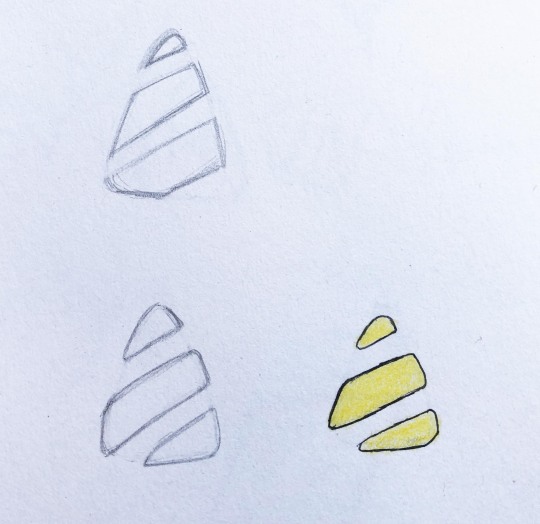
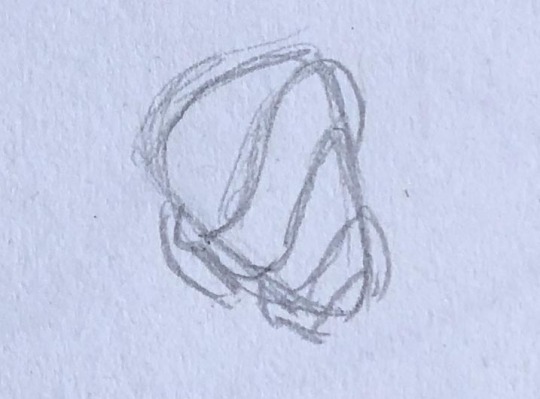
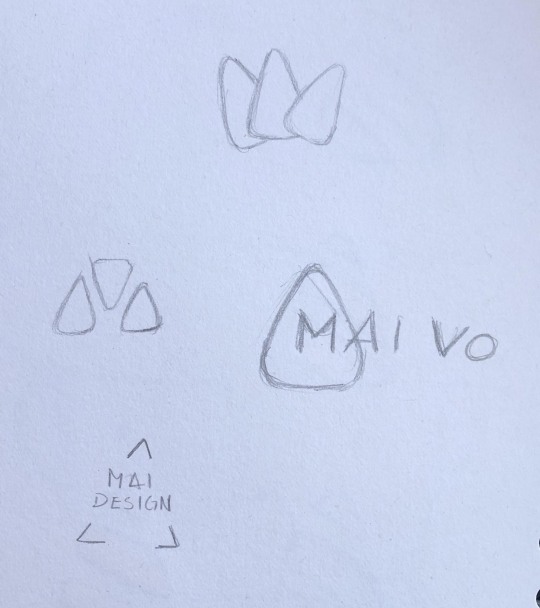
The execution did not go as planned...

Third attempt
For this one I wanted to try something that looks like it was handwritten. Every person has their own handwriting, which is unique. I think the handwritten element gives it a bit more of a personal feeling.

After a feedback moment:


Maybe animate it?
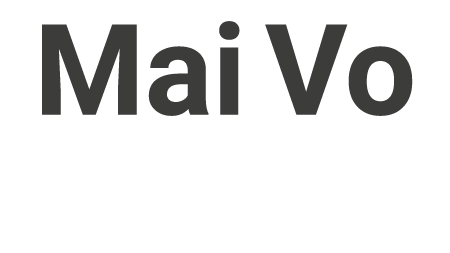
After my interview with O-Utrecht for an internship, I received the following feedback on my website:
“Your logo is nicely animated, but on your portfolio site it’s distracting. Anything moving attracts the human eye, your website is supposed to be about your work. It’s very distracting when something is constantly moving in the corner. Maybe it shouldn’t be every second that the word “designs” comes in, but maybe every 5 seconds or so. It clashes with the communication: your portfolio website is to show your work, the logo is distracting the user from your work.”
Thinking back to when I did all those case studies, only one company had an animated logomark. Now I’m not saying that I don’t want an animated logo, I just think that for now a different one is better. I have decided to make a similar logo without the animation in mind:

After creating this, I wasn’t sure which one was the best for me. I asked for feedback from friends and 4 were chosen.

Because of the different opinions, I started to wonder: lowercase or uppercase?
Source

Source 2
WEBSITE
Before the start of this module I tried to make a layout for my website. I had the time and I will be needing a website in the future, so I just started.
I made these before the websites lecture.

I have received feedback on these “sketches”, I will add these for the campaign pitch.

During this module I tried to use tumblr as a portfolio site, but it didn’t work out the way I wanted it to. I then switched to Adobe Portfolio, which is free to use with the subscription I have. Adobe Portfolio was a bit easier to use, but it doesn’t allow me to move things freely. There are plenty of themes to choose from, but none of them give me the freedom that I want.
I have used Wordpress before and I have learned to code with HTML, but both were a nightmare so I’d rather not waste my time to figure it out again.
The plan is to use the Adobe Portfolio to show my work. In the meantime, I will try to come up with a layout for a website that I can build in Adobe Muse. I don’t have much webdesign experience, but this way I can still show it in a way that’s suitable for me.
I do think that using a mockup for the website design is a good idea, so I can show how the design looks on different devices. Maybe even show how to navigate on the website itself.
Usually I don’t sketch out anything web related, but I did make sketches that I didn’t add in the campaign pitch:
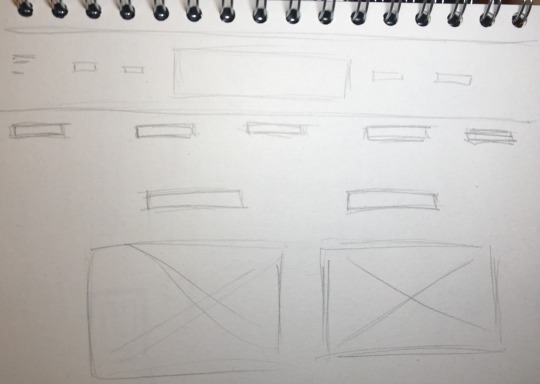

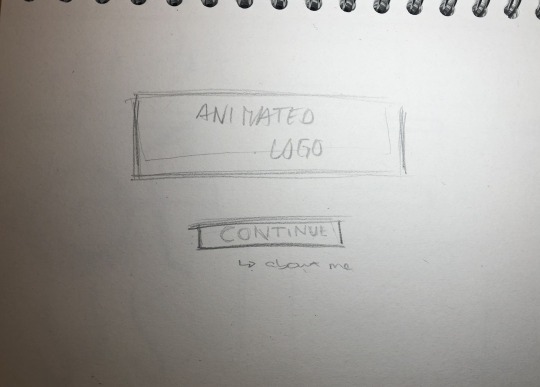

AFTER THE CAMPAIGN PITCH
I have decided to do more research about websites and collect inspiration and sketch.

Divided in 2, starting the first block in color and the second in white
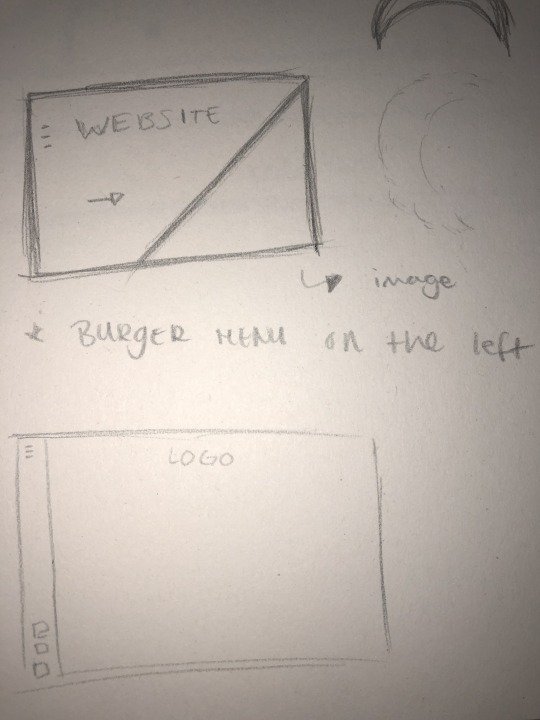
I like the menu on the left, something I have not seen before (Geunbae Lee). At the bottom I will add my socials.
The start of something NEW:
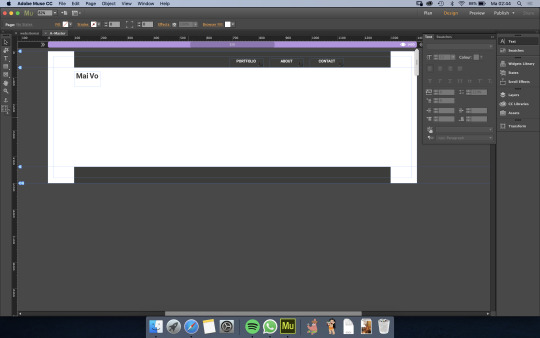
To make gifs work in Adobe Muse (animated logo): place gif, select gif and set resize to none.
Artboards of my sketch, unfinished

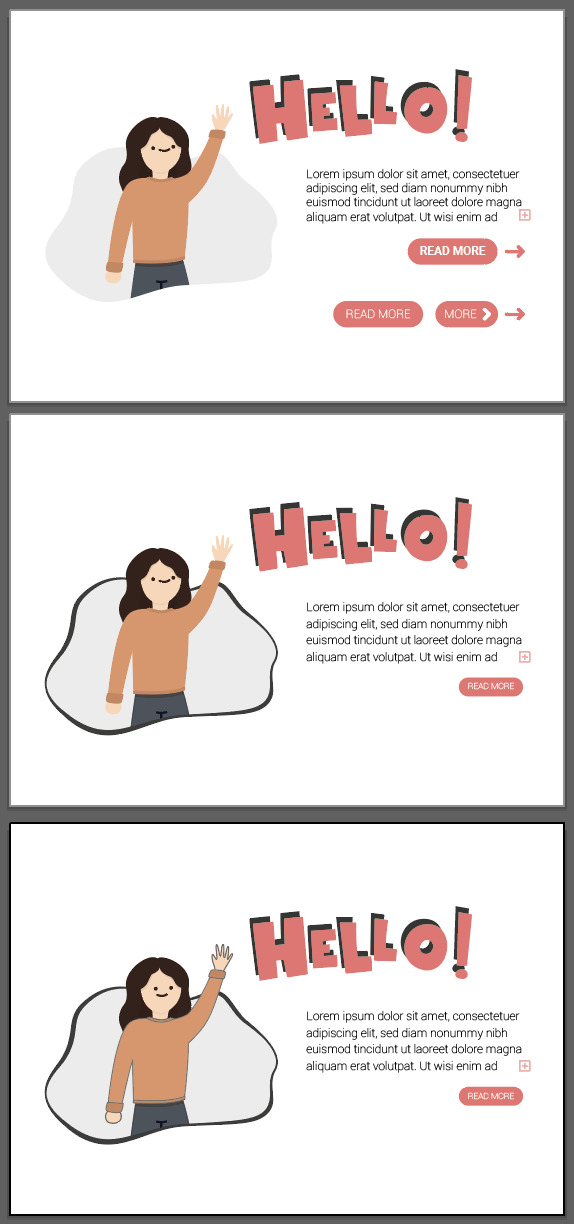
LINKS:
https://www.mockplus.com/blog/post/design-inspiration-sites
https://www.behance.net/galleries/interaction
https://helpx.adobe.com/uk/muse/how-to/create-responsive-website.html
https://helpx.adobe.com/uk/muse/how-to/muse-build-place-illustrator-graphics.html
Every link that I have looked at for case studies and website inspiration:
https://www.ilovedust.com
https://o-utrecht.nl
https://www.dietwee.nl
https://www.bowlerandkimchi.com
https://www.geunbaelee.com/about
Other students/alumni from Communication and Multimedia design (CMD):
https://www.mitchversluis.nl
https://maureenrademakers.myportfolio.com
https://mynameischef.nl
https://www.vasenza.net/about
Old colleagues and alumni from multi mediadesigner
https://www.ricardoheikamp.com
0 notes
Text

Maeve van Klaveren
Eating grapes in a striped room (2023)
Watercolor, soft pastel, pastel pencil and charcoal on paper (30 x 40 cm)
658 notes
·
View notes
Photo
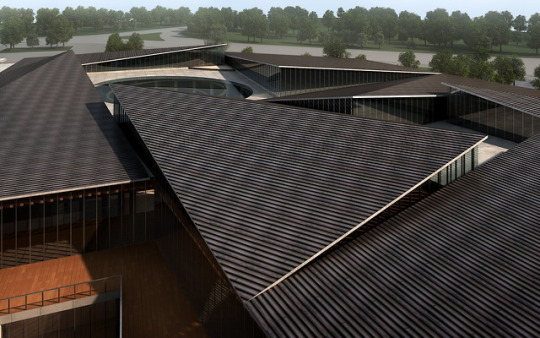




3d building 640 3D Model
Building 640 3D model
High detailed 3d building. Previews were rendered with vray mat and light. The file has all lightning setup and texturing ;multi layer phososhop PSD file included It was at the beginning of the 1920s that the Bauhaus architects permanently distanced themselves from Expressionism and moved closer to "New Objectivity". Two artistic movements influenced this movement: Dutch neoplasticism (De Stijl movement) and Soviet constructivism. The group of neoplasticism gathered in 1917 under the leadership of the painter and poet Theo Van Doesburg, founder of the eponymous magazine of the movement (De Stijl). Van Doesburg and Cornelius Van Eesteren present the neoplasticist ideal, in 1923 in Paris, in the gallery of the "Modern Effort". We can discover a series of projects of houses built according to an asymmetrical arrangement of plans painted with primary colors, which is not without evoking in three dimensions the abstract compositions of the painter Piet Mondrian. This rigorous and abstract approach is fully realized in the Schröder house, built in Utrecht by Gerrit Rietveld in 1924. This house, made of brick and wood for the walls, and concrete for the foundations and balconies, contains an interior space transformable by sliding partitions and possesses another manifestation of modernity. Constructivism, born in Moscow just after the First World War, sees avant-garde artists enthusiastic about the October Revolution and the construction of the new communist society. Due to the economic difficulties of the USSR in the 1920s, most of the constructivist architectural speculations to which the painter Kazimir Malevich contributed, remain in the study phase. The project of a Monument for the Third International, conceived in 1920 by the abstract sculptor Vladimir Tatline, remains the emblem par excellence of the constructivist architecture This work must express the triumph of new technology on traditional masonry construction, as well as the revolutionary momentum of Soviet society. Countless other projects on paper bear witness to the creative effervescence of Soviet architects of the 1920s: the Pravda building in Leningrad, by the Vesnine brothers (1923); skyscraper for Moscow, by El Lissitzky and Stam. Download Building 640 3D model on Flatpyramid now. - #3D_Model #Buildings
0 notes
Text
Utrecht Cathedral For Sale

Some sad news appeared in the Catholic News Agency with reports that St. Catherine’s Cathedral in Utrecht is expected to be closed and sold due to the decrease in attendance, and as the building has become more expensive to maintain.
The cathedral will probably be sold to the Museum Catharijne Convent, a former convent that was turned into a religious art gallery.
A petition has been opened by a group of parishioners who believe there is still a possibility for Catholic growth in the city.
The petition has so far received 1,655 signatures, the petition reads:
“Closing the cathedral and thus removing the visibility of Catholicism in the inner city will prevent growth of the community in the future.”
St. Catherine's was initially built as part of a Carmelite friary, between the 15th and 16th centuries.
It became the cathedral when the Utrecht archdiocese was re-established in 1853.
If St. Catherine's is sold, the bishop's cathedra could be moved to St. Augustine parish in Utrecht, or to a church in Apeldoorn, more than 40 miles east of Utrecht.
Peter Nessen, church historian says that it would be the first time a Dutch cathedra has had to be relocated because of insufficient funds and a low number of parishioners.
From a high of 942,000 Catholics in 1980, the Utrecht archdiocese fell to 750,000 Catholics in 2014.
By 2017, the number of Catholics in the archdiocese had risen moderately, to nearly 754,000.
Read the full article
0 notes
Text
RUNNING THE PARIS MARATHON
In April 2017 off very little training, I managed to pull off what seemed like the impossible; I ran the Paris Marathon. This post is about the trials and tribulations surrounding the adventure.
THE PRELUDE TO THE STORM
In June 2016 I moved to Lyon, France to complete a year-long student exchange as part of my Melbourne University Arts degree. Adapting to the set of challenges which accompanied this move wasn’t just tough, it was painful. To name a few, there were visa requirements to fulfil, notoriously difficult French bureaucracy to contend with, subjects to be selected without a subject master-list or guide, a foreign uni campus (and city) to navigate, not knowing a soul upon arrival and a language barrier to overcome. Suffice to say, I was stressed out to the max for the first few months and it was a struggle to simply enjoy myself. However, down the line I did manage to meet some people, one of whom, Jake, was running the Paris marathon the coming year in April. I immediately saw this as an opportunity to improve my situation as it seemed like a goal that was big enough to cut through the stressful fog of my new French life.
First, I had to get my body into a state which could actually start running again as I had lost a lot of fitness since my arrival so I joined a yoga studio with my friend John Paul. After a couple of weeks of attending yoga classes daily and waking up my body, I started running again. However, before I could get into any kind of running groove, winter came and it was time for me to travel (mostly by myself) during the Christmas break. From Lyon I took a bus to Paris and stayed with a nice French lady in her Airbnb, went to many galleries and caught up with John Paul before he left to spend Christmas in the US. I then took another bus to Brussels and explored the Christmas markets, ate some waffles and oysters and visited many more galleries (all of which were Magritte heavy). From Belgium I caught another bus to Amsterdam and met up with some family friends, the Van Schaiik’s with whom I was to spend Christmas. We explored Amsterdam for a couple of days before heading to the Dutch countryside to meet up with their extended family and have an authentic Dutch Christmas in Oudewater. Over this time, due to the freezing weather, living out of a backpack, and being constantly on the go, no runs were completed. However, Emily Van Schaiik was training for the 100km Oxfam walk so we did do a full day’s hike through the beautiful pastors of Holland, followed by a long bike ride along one of their many premium bike lanes. Little did I know that this would be the only exercise I would complete throughout my winter travels *gasp*. After a good stint in Holland which included trips to Utrecht and Baarle-Nassau, I bid “vaarwel” to the Van Schaiik’s and caught a train to Berlin. This is where I saw my first snow for the winter and it was nothing short of a thrill (I may or may not have shed a tear). It was a bit of a shock being by myself again after spending time with a close family over Christmas but, needless to say, travelling alone is character building (especially in the snow!) From Berlin, I took a train to Prague and revelled in the heavy snow that fell there, despite it taking me ten times as long to walk through the slush in my Melbourne boots. After sampling Prague life for a good week and a half, I was lucky enough to take a couple of trains to the Austrian Alps and do a week’s skiing. Unfortunately, during this time I caught a bad cold which knocked me for six, but skied on I did! After an incredible week in Hopfgarten, Austria it was time to come home to Lyon, commence another semester of French university and finally start training for the marathon. The only problem was, was at this time it was only 5 weeks until race day and the weather was often below freezing! Nonetheless I commenced “training” and began running regularly along the Quai du Rhone, through the Parc de la Tête d'Or and up the steep steps of the Croix-Rousse, a village in the hills of the city. In addition, I got back into yoga which was my only cross training. In this way, I began to enjoy living in the city of Lyon way more and really appreciated what it had to offer. I was seeing sunsets from the top of the Croix-Rousse with the snow-capped peaks of the Chamonix alps in the distance and I interacted with the giraffes, deer and other zoo animals that dwelled in the park/free zoo, Parc de la Tête d'Or. These are just some of the experiences that opened up to me in the short time that I was training for the marathon. Even though the I never managed to increase my training distances above 20km, I saw so much of the city that I otherwise would not have seen and perhaps more importantly, had a purpose (on top of becoming fluent in French and travelling as much as possible.)
THE EYE OF THE STORM
Very quickly, the date of the marathon weekend came upon me. Two days before the race, I caught the bus from Lyon to Paris. Needless to say, my pre-race preparations were totally unconventional. The day before the big 42.195km’s, I spent the day racking up a high walking mileage, exploring the city of Paris. In the morning I headed to the race village to pick up my race bib, had lunch in the Jardin des Tuileries, and visited the Musée de l’Orangerie, revelling at the panoramic paintings of Monet’s nymphs and clearing my head the day before the race. As I was staying in a small Airbnb apartment atop Montmartre, that night me and my friends did a warm up jog around the church of Sacre Coeur, stretching our legs on its steps and popping in for a quick visit before bed time. Like I said, my preparations were unconventional and totally surreal. During this time I was having visions of other runner’s night-before rituals and trying not to be nervous about the fact that I was so physically unprepared that I didn’t have any. Nevertheless, after loosening up around Sacre Coeur, my friends and I made some pasta for dinner in our tiny Parisian apartment and that was about as ritualistic and planned as it got. The following day (Sunday the 3rd of April) we awoke nice and early, caught two metro trains and arrived at the Arc de Triomphe to, omg, run a marathon.
It was a cold, sunny morning and I remember standing at the start line and being astounded by some of the French runner’s nutrition supplements - many had brought chestnut cream and various jams to consume throughout the race (I brought energy gels). Despite this weird nuance, we all lined up together to attempt to run the epic distance and the race finally commenced. The first 1km was achieved by simply running down the cobble stone paved street of the Champs Elysees. As you would expect, however, the running became harder and by the time I was passing the spectacular Eiffel tower, it did not seem so spectacular. I was in a world of hurt, slowly trudging along, vowing to do more training the next time I was to attempt such a long race. With Paris being a relatively small city, the race itself covered an incredible number of historical sites, including the Louvre, Place de la Concorde and the Place de la Bastille. It also ran through the Vincenne and the Boulogne woods at both ends of the city, along the Seine river and through the tunnel where Princess Diana was killed.
One thing I learnt from my first marathon experience was that you get what you train for. I never exceeded a half marathon distance in training and, low and behold, it was around the 22km mark where my body started failing and my average time/ km ballooned out. Not only that, but my pre-race nerves led me to tie my shoe laces too tight, so I had to stop several times to loosen them up as my feet became painfully numb. Because of this, my time for the race was nothing to brag about. However, I had known that my training wouldn’t be sufficient, so to offset my physical unpreparedness I had tripled down on mental preparations, vowing never to quit the race no matter how hard it got. More than anything, it was this accumulated mental toughness that got me through the second half of the run.
The final stages of the race came around the Louis Vuitton foundation and as I was hobbling along, I saw John Paul, who had visited the Louvre while I was running and then came to cheer me on at the end. He ran with me for a couple of hundred meters and then I powered through to the finish line.
THE AFTERMATH
All in all, it was a tough run but an incredible experience that made me stronger. When it was over, I called my parents in Melbourne then caught the metro back to Montmartre with my friends to get changed and head off to the Marais area for dinner. It’s hard to believe that such an epic event only spanned the course of a day, but it is one that I will remember forever and use to spur me on through other tough moments in life. After taking 2018 off, I will give running a marathon another go this year, most likely at the Melbourne marathon in October. I hope to achieve a much faster time compared to the Paris race, but then again there will be far less astonishing sights to see, so I’m sure that I will.
[I’m a 23 year old Melbourne Uni Arts student. Into yoga, running, travel, art, music.]
INSTAGRAM: belle__casey
EMAIL: [email protected]
0 notes
Text
Thinking Through Photography with Maria Antelman
Carlin Brown interviews Maria Antelman on the occasion of her solo exhibition My Touch, Your Command, Your Touch, My Command.

Maria Antelman makes videos, photographs, sound installations, and sculptures using both new and traditional technologies. Conceptually, her art practice points to our interaction with machines and the complicated systems they weave around us. Her themes come from disparate sources like space exploration, crash test facilities, artificial intelligence experiences, and utopian possibilities. Recent shows include On the Exactitude of Rain at Ryan Lee Gallery (NY), A Nonexistent Event at Melanie Flood Projects (Portland, OR), Notes from the Field at the University of Melbourne, Soft Machines at Impakt Festival (Utrecht), Private Matters at Apexart (NY), Stigmergy at 247365 (Brooklyn), The Amateurs at the Agency (London), …But the Clouds… at Room East (NY), and Capsule Spaces at the Eugenides Foundation (Athens). Antelman received her MFA from Columbia University.
—-
CB: There are a few repeating motifs in your work; a hand collaged over footage, explicit references to science and science-fiction, and of course the machine. The title of your exhibition at Melanie Flood Projects, My Touch, Your Command, Your Touch, My Command suggests back to some of that same imagery. I think of voice command systems, tactile technologies, and Artificial Intelligence — the difference between the “touch” (whether physical or psychological) of a human hand or that of a machine becomes blurred. Technology and the machine is an extension of us. This is something you’ve addressed before, like in the sound piece The World of Blocks (2015). Can you speak to that?
MA: We used to handle machines. Now we command technology with a sound, a voice, a touch, a gesture, a motion. There is a relationship of power and a feeling of control attached to how we use it, and it’s intelligent. With the machines, the master and slave component was clear. Digital technologies are kind of sneaky. We create tools and then these tools transform us. We become extensions of the technologies we use. Objects are turning into information technologies and are entering our personal territories. An example is prosthetics: your bionic hearing aid is smart, and thus accessible by a third party (hackable). There is a vulnerability inside its intelligence. Also, on a larger scale, we become dependent to smart technologies serving us. We are losing the ability of doing certain things by our selves. There is always the underlying question: who is in control?
CB: There are also intimate and sexual connotations behind the title. What is the correlation between human intimacy and our computers? If machines are not an extension of us, how might you otherwise describe human-technology relationships?
MA: “We are gathered around the altar of high technology, transforming our loneliness into some kind of community”, a quote from a forgotten source.
CB: You grew up in Greece and studied history in Spain, but relocated to Silicon Valley during the dot-com boom, bust, and rebound of hi-tech. Starting from a place so rich in its own history and moving to a hub of fast-paced technology, your artistic practice seems to act as a bridge between these two worlds. How does the parallel of past and future exist in your work?
MA: Rich history can become a burden, while the hub of fast-paced technology can feel extremely empty. The poet says that thinking about the past connects us to our mortality and thinking about the future connects us to the idea of utopia. What conjures past and future is our imagination. My father was a political cartoonist, and I grew up looking at all these sophisticated comments on politics, economics, society. I loved how they were sad and intense but always made you laugh. Their effect lasted for a second, but that second was amazing. I really admire this quality: being comic and tragic at the same time. Maybe the past is tragedy and the future is a comedy, or vice versa.
CB: You’ve often made work that sits somewhere between video and still image by animating sequences to an audio track. The Repeater (2016) superposes slides of side-by-side photographs with the soft, echoing voiceover of a hired actor. How did you come to this process? Given that your new exhibition is a part of the series Thinking Through Photography, can you describe your relationship with photo as medium?

MA: “Death is a photograph, life is a movie”, wrote Susan Sontag. A photograph makes you wonder what happened, while a movie is an anticipating experience. The viewer is expecting to see what is going to happen next. So, I make movies with photographs, because I am interested in the contrasting feeling of these two reading responses. I started taking pictures very young and later as a cinephile, I felt great admiration for filmmakers. Years later, I came across a video editing program in a box with a user manual, and I started making videos using my photographs. I make these compositions, or rather juxtapositions of different elements (images, sounds, voices, texts, motion, etc), which question the sanity of our society.
CB: “If there is a copy of you, while you are still alive, then the real you ceases to exist at that moment. You can never know if you are the very same person, for fear of an unknown double running around somewhere else.” There is a really powerful message here — it makes me think about the way our virtual presences can succeed our “real lives” and in a way have a separate existence. Can you elaborate on this quote from The Repeater?
MA: This is part of a philosophical argument, also known as the duplication objection. It has been used in the film Total Recall with Schwarzenegger, a technophobic film from 1990. Arnold, the man-machine has had his memories duplicated in multiples. He ends up losing his sense of who he is. The best moment in the film is when Arnold watches a video recording of his original self talking to him, his physical duplicate. It is very nicely confusing. It makes me think of the way we are dealing with our multiple digital personas, which we curate and update constantly. These copies or representations inhabit multiple platforms and data banks. In the Repeater, the images transport us to a natural setting, on an island, with a bunch of amateur radio operators, far away from a dark machinist urbanscape. The radio operation is low key, a couple of stations set on the sand, surrounded by stray dogs, antennas facing the sea and a few careless tourists taking selfies. It feels harmless, and innocent, but the slight possibility of such duplication absurdity creates an intense feeling.
CB: In 2015 you showed in Portland for the first time with your exhibition A Non-Existent Event at Melanie Flood Projects. There are some clear aesthetic differences between the work you presented at that time to the work in MTYC, YTMC. How would you say your practice has shifted since your last exhibition?
MA: Then, I presented a photomontage series inspired by the J.G. Ballard’s novel The Drowned World. The novel takes place in a post-apocalyptic tropical London with high-saturated color descriptions. I loved the feel of the story, the characters and the landscapes. I had shot these black and white negatives inside a metal shop at a NASA center, there where satellites and rockets are built. Again, I was thinking about the interrelation of the mechanical with the digital world. My photographs were shot with a mechanical camera and were about mechanical tools, but I was using digital tools to manipulate them. The result was an amalgam of these two technologies, dipped into the color palette of the Ballards descriptions. Then, I played a sound piece about one of the first inspiring AI intelligent program created at MIT. Two voices were reenacting the human machine interaction, highlighting tensions of knowledge and nonknowledge. Now, that I think about it, I could have used the same title for that show as well.
CB: The work produced for A Non-Existent Event includes photographs you captured during your visit to NASA centers in Mountain View, California and Hampton, Virginia. Can you describe your experiences visiting the NASA centers and how else those visits informed your practice?
MA: I have visited three NASA centers, Ames, Langton and Glenn. All of them were initially Aeronautical Centers, and have wind tunnels built in the first stage of space exploration. Walking inside these humongous architectural monuments, was an incredible experience. The feeling was very archeo-futuristic. The most fascinating part was how they stood there, immense and empty, as proofs to ideas that don’t exist anymore. After the space exploration funding ended, all the space technology was applied to global networks and economies. Satellites now orbit earth, support the communications systems and mirror back to us all our posts, selfies, locations, data, etc. Digital culture technically flourished, using the technological infrastructure of the cold war. During those years people’s vision was directed outwards; now we are looking at each other. It is strange how the culture we are experiencing is a byproduct of another process.
#mariaantelman#melaniefloodprojects#Thinking Through Photography#precipice fund#calligram foundation#carlinbrown#carlinb
1 note
·
View note